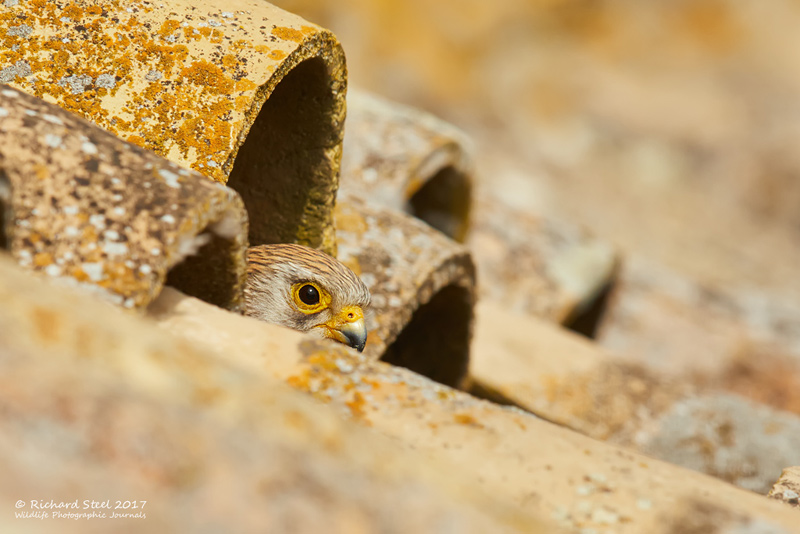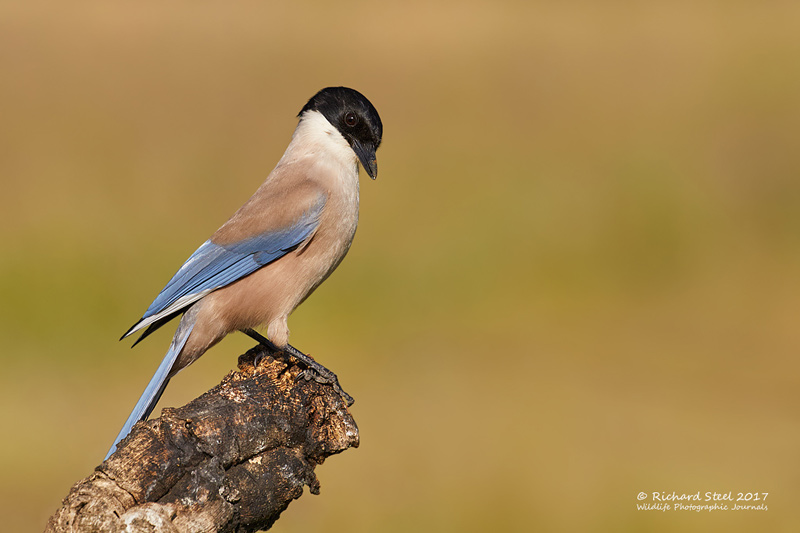After a short drive and a short walk across grassland in the pitch black, I was in the hide. The hide was very small and once again I was locked in for the duration.
It was an odd feeling being inside surrounded by pitch black with the only sound being the relentless wind. Slowly it began to lighten and slowly I could start to make out some vague shapes and textures in the surroundings. The light increased further as dawn gathered pace and I could now thankfully see I was in a different hide to the one Steve had been in the preceding day. To my left was an area of flowering grassland while in front of the longer grass to the right, a small area had been cut short.
I waited for the light to improve and could start to just hear, through the wind, the birds of this Spanish steppe starting to call. I was listening for a particular short clicking call which would signal the presence of Little Bustard. All was quiet and the hide was cold.
The light was now good with the rising sun and while I waited the camera was put to its first use of the day when a Crested Lark briefly alighted on a nearby close boulder.
I heard the noise I had been waiting for off to my right within the flowering grassland. Someone in there was a Little Bustard and it took a while before I managed to see the bird. A brief but fairly distance glimpse of its head and dark black neck poking above the long-vegetation. The next call was much closer and eventually a small turkey-like bird stepped into view.
This was my first view of Little Bustard and it slowly moved around while throwing its head back on its black and white banded neck to make its distinctive call.
To give an idea of the bird and its call I made a short video clip. As you can see the wind continued to blow Well
Little Bustard in Spain from Richard Steel on Vimeo.
One interesting part of Little Bustard behaviour is the males in the breeding display do small jumps into the air, above the long grasses, to advertise their presence. I was hoping to capture this behaviour but this male had other ideas and only jumped once during my whole visit. Fortunately it did this jump in a nice setting and I managed to capture a single image which was good as it took me completely by surprise.
Another photographer who was further down the valley in another hide had a male jumping around in front of his hide like it was tied to a pogo stick in front of his hide.
Given the lack of display leaping I had to make do with portrait images as the bird strutted around its territory,
At one time the bird came up right next to the hide. Interesting to see the bird at really close quarters as sat quietly in the small freezing cube. After a while the bird skulked back into the long vegetation to the left.
It was great to see the bird and a memorable experience. A shame I did not get to see more of the display hops but it had been a much better session than Steve's disaster with the long vegetation the previous day. Steve over in the Hoopoe hide had done well and I was pleased the Turtle Dove had put in an appearance for him.
I welcomed the arrival of the car to collect me in the late morning as by this point I was freezing cold from the biting wind and lack of movement and very uncomfortable having been stuck in a very small hide for a prolonged period.
After lunch we took a drive round some local farm tracks in the car but all the birds seemed to be lying low in the strong cold winds. After a couple of hours of fruitless effort we decided to give up and call it a day.



































































